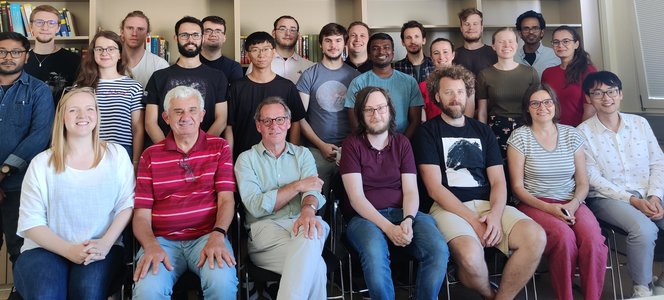Nuclear Spectroscopy Department
The Nuclear Spectroscopy Department aims to study the structure of atomic nuclei by performing decay and in-flight gamma spectroscopy experiments at GSI/FAIR and other accelerator facilities all over the world. With comprehensive high-resolution gamma-ray and charged particle spectroscopy of selected key isotopes, the evolution of the shell structure and exotic nuclear shapes near the limits of nuclear existence and its relevance to the nucleosynthesis of heavy nuclei are being investigated. The department is continuously developing necessary detectors and instrumentation for these spectroscopic investigations as well as the associated experimental methodology. The transfer of technologies derived from the development work is actively pursued for the benefit of society. Many activities are performed together with international partners in the collaborations HISPEC/DESPEC, AGATA, MINIBALL, PARIS, PANDA and others. The department operates a special HISPEC/DESPEC group coordinating the activities of the collaboration and developing and building the related infrastructure for the experimental campaigns at GSI and FAIR.
HISPEC (HIgh-resolution in-flight SPECtroscopy) experiments are possible thanks to the unprecedented characteristics of AGATA, the Advanced GAmma Tracking Array. The nuclei of interest are secondary reaction products following Coulomb excitation, direct reactions, or fragmentation reactions of relativistic radioactive ion beams provided by the FRS and in future by the Super-FRS at energies of 100-200 MeV/u. AGATA enables the disentanglement of the complex structure of excited states for the most exotic nuclei ever studied. The department is one of the key partners in the development of AGATA and hosted the early implementation of the spectrometer already from 2012 to 2014.
Slowing down the rare isotope beams from FRS/Super-FRS to energies around the Coulomb barrier enables exploitation of classical reaction types like multiple Coulomb excitation, transfer reactions and compound nuclear reactions. This method is particularly useful for beam species not easily available at ISOL facilities. The slowing-down method and a suite of dedicated beam detectors is being developed by the department.
Several DESPEC (DEcay SPECtroscopy) setups are being commissioned at different international accelerator laboratories. They are now available at GSI/FAIR for FAIR/NUSTAR Phase-0 experiments. These set-ups will deliver comprehensive decay information from identified key nuclei at secondary beam yields as low as one ion per hour. The department leads the development work for the DEGAS spectrometer, the most efficient dedicated high-resolution gamma spectrometer for decay experiments worldwide. Furthermore, a fast and position-sensitive plastic detector for β-particle measurements in conjunction with the active AIDA implanter has been developed.
In the coming years the department will concentrate on decay studies employing DESPEC set-ups at the FRS within the FAIR/NUSTAR Phase-0 campaign, as well as on experiments at other international facilities.





